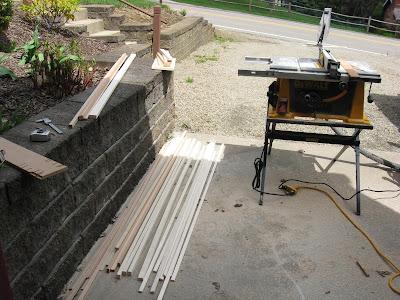The test showed that although the epoxy didn't stick as well on the stain as on bare wood, it would be sufficient to keep the top sheet on during use. Based on the successful test, I stained both skis.
Next, my sister, with a small amount of help from me, painted the ski graphic. The graphic is based on Revelation 19:11-13:
11 I saw heaven standing open and there before me was a white horse, whose rider is called Faithful and True. With justice he judges and wages war. 12 His eyes are like blazing fire, and on his head are many crowns. He has a name written on him that no one knows but he himself. 13 He is dressed in a robe dipped in blood, and his name is the Word of God.
The graphic was intentionally made with great detail on the tail of the ski and with much less detail at the tip.
Next the skis were put in the press. A full sheet of fiberglass was not place on the top of the ski, only a narrow strip was placed on each edge of the ski.
The flashing was trimmed off with a jig saw and the edges were finished with a bench top belt sander and hand belt sander.
The final step was to peel off the tape that was protecting the top sheet and base. This was done relatively easily, but it would have helped if the tape was a little thicker to prevent it from tearing.
Prior to pressing the skis, I placed a nameplate at boot center on each ski.
The only thing left to do is mount the bindings and tune the skis.

































































